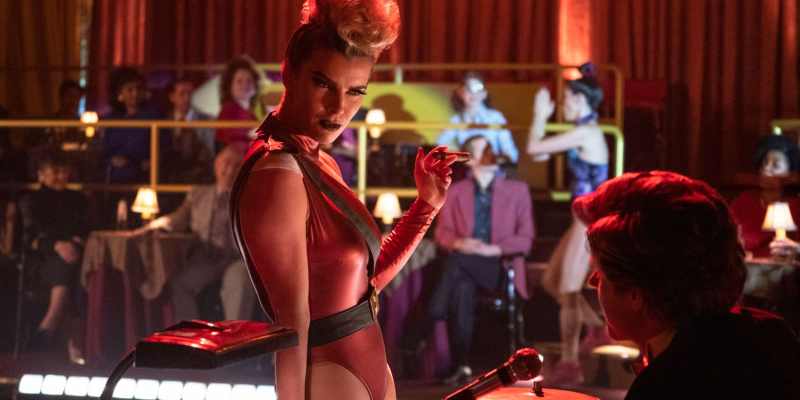There has been a lot of news about Netflix canceling or wrapping up its streaming shows recently: Altered Carbon, The Dark Crystal, GLOW, The Chilling Adventures of Sabrina, Patriot Act with Hasan Minhaj, F Is for Family.
Part of this reflects a larger industry-wide turmoil in the wake of the current pandemic, as other studios have been forced to cancel (or even completely abandon) television series that have become unfeasible. However, Netflix has weathered the pandemic well; it added 15 million subscribers in the first quarter and 10 million subscribers in the second, although the company expects “less growth” in the second half of the year.
Still, the pandemic had some bearing on the recent cancellations. The crisis has led to longer shooting schedules and higher production costs. Budgeting and scheduling uncertainties related to the pandemic were cited as a factor in the cancellations of previously renewed shows I Am Not Okay with This and The Society. GLOW had already begun production on its fourth (and planned final) season when the plug was pulled for pandemic-related reasons.
However, some of these cancellations predate the pandemic and appear unrelated. This is interesting because Netflix has a long history of investing heavily in original content. In 2019, Netflix reportedly spent $15 billion on original content. The company reportedly signed a $150 million deal with Shonda Rhimes and a $300 million deal with Ryan Murphy. The company reportedly spent $225 million on Martin Scorsese’s The Irishman.

Netflix has funded these expenses by becoming “a serial issuer of debt.” In April, it made an offering of $1 billion in junk bonds, adding that to accrued debts of over $14 billion. While there’s some debate about the long-term sustainability of this approach, it has been seen to divorce Netflix’s production machine from the standard constraints of the entertainment industry. Netflix’s commissions are not governed by internal calculations as simple as box office receipts or viewing figures. Instead, Netflix’s processes are decidedly opaque.
These cancellations are surprising because Netflix is still young enough that it is codifying its behavior. While it had earlier experimented with shows like Lilyhammer, Netflix only truly emerged as a major content provider with the first season of House of Cards in February 2013. The concept of “binge-watching” that had only really begun with DVD box sets at the turn of the millennium entered the mainstream. This was a game-changer. It was arguably a new mode of media.
Then came the big bang. Following the release of the first season of House of Cards, Chief Content Officer Ted Sarandos explained, “The goal is to become HBO faster than HBO can become us.” This meant doing a lot and doing it fast. Two years after the premiere of House of Cards, Netflix was home to “the biggest collection of first-run scripted content of any other subscription-based network in America, cable or streaming.” This was only five years ago.
The company invested heavily and quickly in content, commissioning expensive projects across a diverse array of genres to solidify its place in the media landscape. The company was so devoted to the idea of generating content that it was a surprise when, in September 2016, the company announced the cancellation of Bloodline. Reports suggest that it was at least partially down to the ending of tax incentives in Florida. This was the company’s first big cancellation, only four years ago.

Of course, much like House of Cards wasn’t technically the first original show produced by Netflix, Bloodline wasn’t the first show to be canceled by the streamer. It was just the first one to attract a lot of attention because it was the first time that Netflix had pulled the plug on show that was even slightly “buzzy.” It seems highly unlikely, for example, that Leonardo DiCaprio was particularly bothered by the cancellations of Lilyhammer or Hemlock Grove.
Bloodline might have been the first medium-to-high-profile casualty of Netflix’s cancellation policy, but it was not the last. Bloodline ended in May 2017. The Get Down was also canceled in May 2017. Sense8, Girlboss, and Gypsy were canceled the following month. Eleven more shows would be canceled in 2018. Around this time, observers noticed that the service appeared to be tightening its belt and was less likely to allow its shows more seasons to find their feet.
In June 2018, Sarandos made it clear that Netflix was not going to be reckless in commissioning and renewing television shows, explaining, “I’m building a team to say ‘Yes,’ but we are also responsible shepherds of our members’ money… Relative to the size of the watching of a show, we want the show buys to make sense.” Some of these canceled shows had dedicated followings, with the fans of Sense8 convincing the company to greenlight a movie to serve as a finale to the series.
Appropriately, this wave of cancellations began a little over three years following the launch of House of Cards. Three seasons seems to be roughly the limit for Netflix, with the service preferring seasons that run to ten episodes and shows that run to 30 episodes in total. There are also financial considerations at play, with the standard Netflix deal meaning that shows become more expensive to the service with each subsequent season.

In some ways, this is just an extension of the business model that has always driven television production. Historically, television shows hoped to run to 100 episodes to ensure that they could be sold into syndication, although this is relatively rare these days due to the fact that even primetime networks have embraced shorter seasons. For the Disney Channel at the turn of the millennium, the magic number was 65, meaning that reruns could air five nights a week for a quarter of a year.
More than most other media, the shape of television has largely been defined by its broadcast constraints. The individual episode runtime was historically determined by the amount of advertising sold in an hour block of television, the length of a season was dictated by audience viewing habits and schedule demands, and the number of seasons was often calculated with an eye to syndication. Even the episodic nature of classic television was a feature designed to make syndication easier.
The demands of streaming television would be different. A lot of Netflix’s content is built for binging. That is the default mode of consumption. This explains a lot about how Netflix shows are designed. Shows are highly serialized to keep audiences hooked and watching. The individual episode is less important because it is less likely to be consumed as a standalone entity. This is also perhaps why Netflix shows tend to sag in the middle, as the beginning and the end are the most important parts.
In October 2017, Netflix revealed that — within that year to that point — more than 5 million users had consumed at least one full season of 13 episodes in less than 24 hours. In a letter to the House of Lords Communications and Digital Select Committee in July 2019, Netflix confirmed that in gauging a show’s success, it would look at the number of people who started and completed a title within “the first seven and 28 days on Netflix.”Classic television is built for the long haul; Netflix is not.

Netflix is built on a model of instant gratification and relevance. This is why its social media presence is so important. It is an internet company, thriving on the churn of the content. The only major Netflix properties that go years between seasons are Arrested Development, which it imported from Fox, and Mike Flanagan’s The Haunting series, which is a horror anthology. Netflix’s sweet spot is content that takes between a week and a month to consume, which users then rave about online.
As such, short seasons and short series make sense. Cobra Kai was one of Netflix’s breakout hits of the summer, perhaps because its 20 half-hour episodes could be binged within a week by audiences attracted by the buzz. Conversely, viewership and conversation tend to drop over time. The Punisher reportedly lost 40% of its viewers from its first to second season. Social media buzz for the Netflix Marvel shows as a whole declined sharply over time. Few of its canceled shows are truly “buzzy.”
Of course, there is a downside to this. Many of these shows have been canceled unceremoniously, with the writing staff never given a chance to wrap up their story or character arcs. It is the streaming equivalent of classic network shows canceled on a cliffhanger, but is frustrating because Netflix should be able to predict when it will be finished with a show ahead of time. Although, by that point, it is likely the company is more interested in developing the next new “buzzy” idea.
There is a ruthlessness to the dropping of the axe, one at odds with the company’s cheerful social media persona. All of this is a reminder that content creation is as governed by commercial concerns for Netflix as it is for any other provider. Only the particulars of the calculation change.
